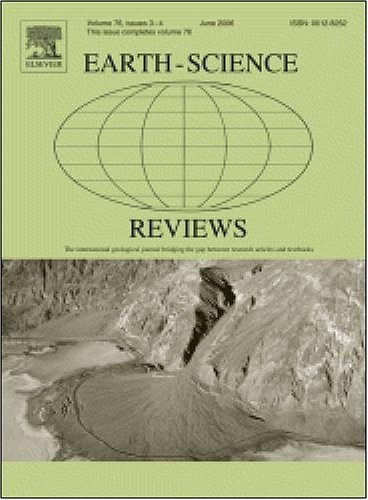Shoreface nourishments: Research advances and future perspectives
IF 10
1区 地球科学
Q1 GEOSCIENCES, MULTIDISCIPLINARY
引用次数: 0
Abstract
Shoreface nourishments have become a popular management option to mitigate coastal retreat for sites with abundant sand supplies. With shoreface nourishments, relatively large volumes of off-site sand are placed under water in typical water depths of 4–10 m. This part of the nearshore zone has a high bed level variability and contains a myriad of (rhythmic) morphological features. As a result, understanding and forecasting shoreface nourishment morphodynamics and impacts is challenging. Significant progress on this topic is needed in due time, especially in light of emerging climate-change effects. This review paper presents an overview of field, laboratory and numerical modeling studies on shoreface nourishment morphodynamics. We have identified 4 key knowledge gaps. First, the spreading of nourished sand through the coastal zone is poorly understood, and has not been quantified. Second, it is unclear how design variables such as size, placement location and grain-size affect the lifetime, spreading and impact of shoreface nourishments. Third, the cumulative effect of repeated shoreface nourishments (scale: 1–10 km, 1–10 years) on the coastal system as a whole (100+ km, 50+ years) is largely unknown. Fourth, numerical models cannot reliably predict the complete morphological development and impact of shoreface nourishments. To tackle these knowledge gaps we propose a research agenda to ensure the generation and valuation of scientifically robust and societally relevant knowledge.
滨地营养物:研究进展与未来展望
海岸面营养物已经成为一种流行的管理选择,以减轻有丰富的沙子供应的地点的海岸撤退。对于岸面营养物,在典型的水深为4-10米的水下放置了相对大量的非现场砂。近岸带的这一部分具有很高的层位变异性,并包含无数的(节奏)形态特征。因此,理解和预测岸面营养形态动力学及其影响具有挑战性。在适当的时候需要在这一问题上取得重大进展,特别是考虑到正在出现的气候变化影响。本文综述了滨水营养形态动力学的野外研究、实验室研究和数值模拟研究。我们已经确定了4个关键的知识缺口。首先,人们对营养沙在沿海地区的扩散知之甚少,而且还没有量化。其次,尚不清楚尺寸、放置位置和粒度等设计变量如何影响滨面营养物的寿命、扩散和影响。第三,重复滨面营养(尺度:1-10公里,1-10年)对整个海岸系统(100+公里,50+年)的累积效应在很大程度上是未知的。第四,数值模型不能可靠地预测岸面营养的完整形态发展和影响。为了解决这些知识差距,我们提出了一个研究议程,以确保产生和评估科学上可靠和社会相关的知识。
本文章由计算机程序翻译,如有差异,请以英文原文为准。
求助全文
约1分钟内获得全文
求助全文
来源期刊

Earth-Science Reviews
地学-地球科学综合
CiteScore
21.70
自引率
5.80%
发文量
294
审稿时长
15.1 weeks
期刊介绍:
Covering a much wider field than the usual specialist journals, Earth Science Reviews publishes review articles dealing with all aspects of Earth Sciences, and is an important vehicle for allowing readers to see their particular interest related to the Earth Sciences as a whole.
 求助内容:
求助内容: 应助结果提醒方式:
应助结果提醒方式:


